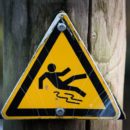Fear of Hurting Other People
The fear of harming others can be a sign of obsessive-compulsive disorder (OCD), a neurobiological condition that is associated with repetitive, intrusive, distressing thoughts that can’t easily be dismissed. Fear of Harming Other People On Purpose Some aggressive obsessions involve the fear of harming others intentionally. In my last post about the fear of hurting other people on purpose, I identified several specific examples of harm obsessions. These included the fear of losing control and murdering your child, the fear of stabbing a loved one, and a variety of other fears involving violent, murderous, or criminal acts. In some of these examples, anger was a trigger for OCD obsessions. Fear of Harming Other People By Accident Other harm obsessions involve the fear of causing accidental harm, usually through negligence or carelessness. Individuals with these fears often feel that if...
Read MoreAggressive Obsessions: Fear of Harming or Killing Others
Aggressive obsessions go by many names. Harm obsessions, violent obsessions, morbid obsessions…the list goes on… These symptoms of obsessive-compulsive disorder (OCD) involve the fear of harming or killing other people. In other cases, aggressive obsessions are directed at the self, such as when individuals experience unwanted, intrusive, and recurrent thoughts about hurting or killing themselves (suicide obsessions). This post will focus on aggressive obsessions that involve the fear of harming or killing other people. Aggressive obsessions involving suicide and self-harm will be addressed in a subsequent post. Fear of Harming or Killing Others Aggressive obsessions often focus on violent, murderous (stabbing, shooting, choking, poisoning), or criminal (arson, bank robberies) acts and involve graphic mental images of blood, injury, and death. Individuals with violent obsessions may fear becoming serial killers or deliberately hurting someone they love. Aggressive obsessions affect individuals...
Read MoreHarm Obsessions & Violent Obsessions
Imagine that you’re leaning down to kiss your young daughter goodnight, when BAM! You are jolted by an image of yourself stabbing her to death. Alternatively, picture yourself as a young child who is intensely afraid of playing with your new puppy…not because you’re afraid of dogs but because you are afraid that if you touch it, you might lose control and snap its neck. In either scenario, the most horrifying part is that you’re afraid that you might secretly want to act on these unwanted thoughts. After all, why would the thought keep coming if it didn’t mean something? Violent Obsessions, Harm Obsessions, & Bad Thoughts This is the daily reality for many adults, teens, and children who experience harm obsessions, also known as violent obsessions, a type of OCD symptom that involves unwanted, repetitive violent thoughts, impulses,...
Read MoreOCD Books & OCD Websites
This is a recommended list of OCD books and OCD websites that I consider to be essential reading for individuals with obsessive-compulsive disorder. In addition to my formal training in OCD treatment, these OCD books and websites have had a profound impact on how I conceptualize and treat OCD. This list is not intended to be exhaustive but instead includes only those resources that I have read personally and consider to be the “best of the best.” I will update this list periodically as I come across other “must read” books, websites, and resources for people with OCD. Please note: In order to keep this list streamlined and useful, unfortunately I can’t accept requests for additions to this list. As such, comments have been disabled for this post. Books About OCD Freedom From OCD by Jon Grayson Dr. Jon...
Read MoreChecking & OCD: Part 1 (Checking for Safety)
Compulsive checking often begins innocently enough. One check here, two checks there… But OCD’s greed knows no bounds. What starts out as a simple check “just to make sure” eventually spirals into disabling OCD doubt that can come to predominate innumerable situations and scenarios. Checking behaviors often emerge in situations in which “being irresponsible” might result in catastrophic outcomes, guilt, anxiety, or regret. OCD-related checking is usually driven by a need to obtain absolute certainty that nothing bad will happen. Compulsive checking is typically harder to control in “high stakes” scenarios and in situations in which you perceive that you have personal responsibility for the outcome. Unfortunately, at least some degree of personal responsibility is present in most situations. Moreover, many people with OCD often feel that safety is tenuous or that disasters are lurking just one mistake away....
Read More







